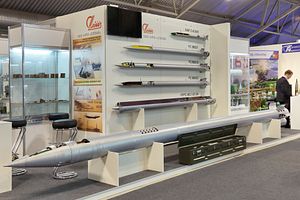The ongoing proliferation of submarine capabilities among Southeast Asian states is a hot topic in international politics. Arms races have been sparse since the end of the Cold War, so any series of events that appear to have those characteristics is widely studied. Most scholars have explained the arms build-up as a balancing of forces; however, such demand-side explanations overlook an underlying supply-side explanation, which is the global buyer’s market for arms.
The navies of Singapore, Indonesia, Malaysia and Vietnam all boast submarine forces, with the Philippines announcing plans in December to acquire similar capabilities. The submarines are foreign made, and often second hand. The submarines range from Swedish Challenger-class (for Singapore), French Scorpène-class (Malaysia), German Type-209 submarines (Indonesis), and Russian Kilo-class (Vietnam). Most of these acquisitions have been recent, and this flurry of activity is what observers have called a force build-up.
Naturally, scholars have set about providing explanations for this force buildup. A particularly common explanation is that these states are balancing their military capabilities against various states. Some commentators have speculated that Southeast Asian states are balancing against each other, citing an inter-ASEAN naval arms race. But military balancing activity within a strong regional organization is rare behavior. Even though ASEAN’s focus on security cooperation is secondary, it would still be strange for states within such a well-institutionalized regional organization to be squaring off against each other in the manner suggested by the rate of naval acquisitions.
More commonly, observers link a naval buildup to the desire to balance aggressive Chinese actions in the South China Sea and more generally. Vietnam specifically had engaged in a naval stand-off with China in the summer of last year over a Chinese oil rig placed in waters claimed by Vietnam, but nearly all of these Southeast Asian states have maritime disputes over China’s claimed “nine-dash line.”
Asia expert Gerhard Wills, however, argues that “While Vietnam, Malaysia, Singapore and Indonesia can deploy up to six submarines, China alone has more than 60 of them; so this can’t seriously be an attempt to strike a military balance.” The argument continues that these states are not interested in achieving military parity with China – clearly none of these states has anywhere near the resource base of China. Rather, these states are interested in increasing their asymmetric capabilities vis-à-vis China, such that any offensive act would entail extremely high costs.
Moreover, the branch of theory from which the idea of balancing comes argues that these power stand-offs occur when one states is challenging another states for dominance. The classic example of this is the Cold War nuclear arms race, when the United States and the Soviet Union were completing for international hegemony. But Southeast Asian states do not share this relationship with China – even a regional power like Indonesia is not about to eclipse China on the world stage. So describing this action as “balancing” against China fails to give the whole story.
Those explanations for the naval buildup that come purely from the demand side of the phenomenon are clearly insufficient. An increasing ability to resist Chinese aggression plays a role in explaining the acquisitions: Chinese actions in the Spratly Islands were specifically mentioned in the recently announced Philippine plans to purchase a submarine force. But by themselves, such accounts are insufficient. An alternative explanation centers on the global “buyer’s market” for arms.
Arms, including naval assets, are increasingly easy to procure. And when supply goes up, it follows that more arms will be bought. Data from the Stockholm International Peace Research Institute (SIPRI) shows that military expenditure in the region has been consistently on the rise since 1992.
The shift to a global buyer’s market for arms started with the end of the Cold War, but intensified with the 2008 global financial crisis. Western states, with traditionally high defense acquisition budgets led to new purchases being curtailed. So arms manufacturers turned to countries that were less troubled by the financial crisis, such as the BRICS and ASEAN states. Exporting to these non-traditional markets was a coping mechanism for reduced domestic demand.
A program of arms export deregulation accompanied the market shift. To take the example of the United States (since according to SIPRI it is the world’s largest arms exporter), oversight of arms exports has been moved from the Department of State, to the more business-oriented Department of Commerce. Though the submarines that have been purchased in Southeast Asia have come from European states, the American deregulation of arms still promotes a buyer’s market mentality for the global arms trade.
Clearly this market shift applies to more than just submarines. Singapore, Vietnam and Malaysia are all among the world’s top 20 arms importing countries, according to SIPRI data. Singapore has imported American F-15 fighter jets. Malaysia and Indonesia imported Su-30s from Russia. Main battle tanks, armored personal carriers, and personal rocket launchers have also been delivered to various Southeast Asian states.
Balancing alone is an insufficient explanation of the build-up of submarine forces (and other conventional military assets) in Southeast Asia. Increasing asymmetric capabilities to raise the costs of potential Chinese aggression is clearly a motivating factor. But a complete explanation includes the fact that arms imports are increasingly available for these states. In short, it is a buyer’s market for arms, and Southeast Asian states are taking advantage of that.
Matthew Ribar is a research assistant, and an analyst for the St. Andrews Foreign Affairs Review.

































